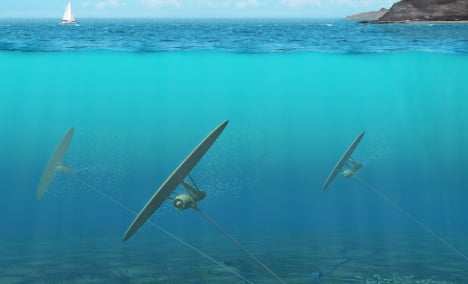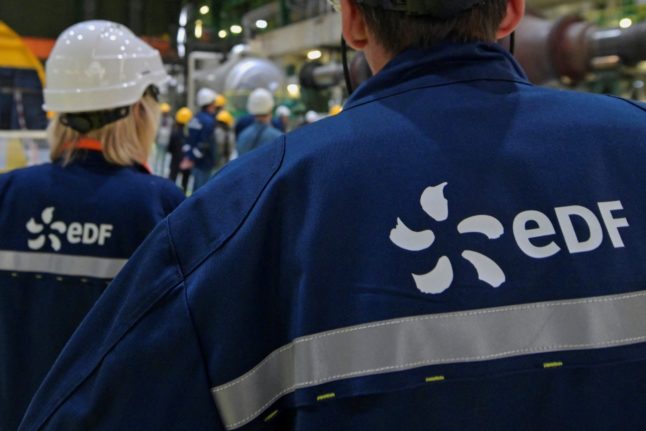With the hunt for new ways of producing electricity growing ever more intense, and the recent tragedy in Japan raising doubts about nuclear power, the world’s oceans may provide a viable clean-energy alternative.
And a Swedish company has been attracting plenty of attention with its award-winning “underwater kite” solution for generating power from beneath the ocean waves.
Minesto, based in Frölunda outside Gothenburg, has developed a form of underwater kite, which harnesses energy from ocean tides and currents at a far more efficient rate than wind turbines above the surface.
The technology, called Deep Green, looks like a child’s small kite with a turbine on its back.
It is tethered to the seabed and “flies” in a circular motion converting tidal currents into energy. As seawater is 800 times denser than air, the turbine can generate 800 times more energy than if it were in the sky.
The kite can travel 10 times faster than the flow of water it operates in, and because of the relationship between speed and energy, the faster the kite travels, the more efficiently it creates energy.
For example, if the kite moves as 10 times its normal speed, the increase in energy production will be 1,000-fold.
As sea currents and the flow of energy from this source are so stable and predictable, the company claims that it can generate 500 kilowatts of power even in calm conditions.
“We are confident once successful trials have been carried out for it to be commercially operative by 2013,” Minesto CEO Anders Jansson explains.
Minesto has already won several plaudits for its prototype model, not least from Time Magazine, which included it in its 50 Best Inventions of 2010.
It was also the only non-American company to make the 2011 Top 15 Utility Solutions listed by The Clean Technology and Sustainable Industries Organization (CTSI).
Each year a panel honours those companies with the best business plans and most compelling solutions to real-world customers.
Minesto raised €2 million ($2.9 million) last year to develop the technology further and build a scale model, which will be unveiled after this summer off the coast of Northern Ireland, giving the company a chance to test it out in real conditions.
Comparisons with wind power in particular are favourable. There is also likely to be less opposition as it does not blight the landscape as many believes the huge turbines do.
There is, however, an environmental impact beneath the sea surface though and extensive studies have been carried out to see how marine wildlife would be affected, says Jansson.
“One of the major obstacles has been the threat of things getting caught up by the tethers. We will place the kites far enough apart so they cannot get intertwined, but there is a danger of floating devices and fishing nets for example,” he explains.
“We have a special security system to counteract this and a fail safe mechanism if something does go wrong, but it is a major factor.”
Jansson adds that in one way the kites can actually have a positive environmental effect.
“The kites actually pump air back into the ocean which will help clean up the water. Also, where the kites are tethered there is no possibility of trawling the seabed.”
The pumping of air back into the ocean water will minimise any adverse effects on sealife.
“The fish and mammals are used to having objects moving past them so the kites do not pose a threat to them,” he adds.
‘Underwater kite’ technology has been under development for several years, with Swedish Saab Group working on the underwater kite technology as far back as 2003.
Minesto was eventually formed as a Saab spin-off in 2007 to further develop the Deep Green concept.
Jansson is convinced that once successfully trialled in real life conditions, the underwater kite technology will prove to be a low cost way of harnessing tidal energy.
It is he says a low cost highly efficient concept, where each small kite device will be capable of generating enough energy to power 300 households.



 Please whitelist us to continue reading.
Please whitelist us to continue reading.
Member comments